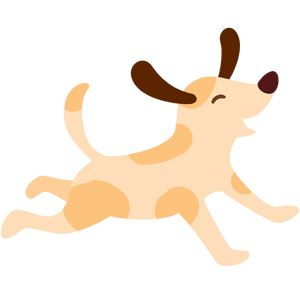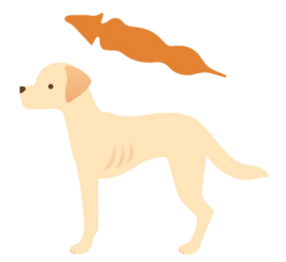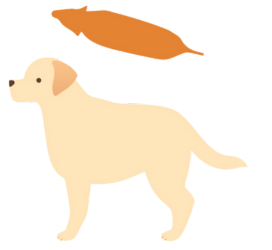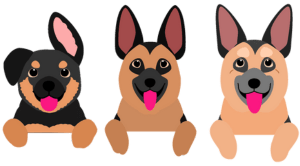Your cart is currently empty.
TLC breaks down how to use feeding guidelines and the many factors that go into determining the right amount to feed your pet each day.
TLC breaks down how to use feeding guidelines and the many factors that go into determining the right amount to feed your pet each day.
Your pet’s diet is one of the most important factors in their overall health and well-being. Just as important is feeding them the right amount of food.
The feeding guidelines found on all pet food packages are recommendations to help pet parents determine how much food to feed their fur babies. Feeding guidelines are developed considering factors like the food’s calorie content and nutrient profile, along with things like weight and age. TLC Pet Food provides feeding guidelines for all of our Whole Life™ Pet Food formulas and also offers an online Feeding Calculator that further tailors the recommendations based on your pet’s weight and life stage.
In this post, we provide helpful tips for adjusting feeding guidelines based on your furry family member’s unique needs.
Feeding guidelines, including those developed for TLC Whole Life™ Pet Food, are carefully developed by professionally trained nutritionists to serve as general recommendations for the average puppy, dog, kitten, or cat, and are typically broken down by weight and life stage. They are based on nutrient profiling, scientific research, and data collection, which inform the nutritional requirements needed for pets at each life stage. Since they are based on averages, feeding guidelines are not intended to serve as strict instructions. Every pet has their own unique set of characteristics that should be considered when determining the right amount of food needed to meet their needs.
So how can you tell if you should adjust the feeding guidelines for your own pet? Here are some key factors to consider, along with the steps to take when adjusting the amount you feed your pet:
Active Pets: Pets who are particularly active, including working dogs, dogs who participate in agility training, or active kittens, will burn through calories faster than those who are not. This means you may need to slightly increase the amount you feed your pet from the recommended daily feeding guideline in order to meet their needs. When adjusting food to increase calories, it’s generally recommended to increase their intake slowly (ie., increase by approximately 10%) while monitoring your pet’s weight and overall condition. For example, if the feeding guidelines recommend you feed your pet 2 cups of food per day, and there is evidence that it is insufficient, begin by increasing their intake to 2.2 cups per day.
Sedentary Pets: For pets who are less active on a regular basis, by temperament or based on breed (ie., adult Basset Hounds or Bulldogs), you may find you need to adjust the daily recommended feeding guidelines to prevent overfeeding and unwanted weight gain. Similar to adjusting to increase daily intake, it’s generally recommended to begin slowly (ie., adjusting by approximately 10%) while monitoring your pet’s weight and overall condition. For example, if the feeding guidelines recommend you feed your pet 2 cups of food per day, and there is evidence that it is too much food, begin by decreasing their intake to 1.8 cups per day.

Underweight Pets: If your pet appears to be underweight or is not gaining weight as expected, consider steadily increasing their portion size or their total number of meals per day. Fully grown, underweight pets often have an extreme abdominal tuck, and their ribs and pelvic bone can easily be seen at a glance.


Check out “How to Monitor Your Pet’s Weight” for more information about monitoring your pet’s weight and adjusting feeding guidelines when they might be over or underweight.
Puppies/Kittens: Puppies and kittens have specialized dietary needs simply because of how much is happening during this stage of life. They require additional calories to fuel their growing bodies and to develop strong muscles and bones. They have a faster metabolism compared to adults, requiring a constant supply of energy to sustain their growth and daily activities. As they grow, their nutritional needs will also change. It’s important to note how feeding guidelines are broken out by life stage. Be prepared to gradually adjust the amount of food you’re feeding your puppy or kitten at each milestone. Again, remember that feeding guidelines are recommendations, and you may need to adjust them to meet your pet’s individual needs at any point during their growth.
Senior Pets: As our pets age, their dietary needs will often change due to shifts in their metabolism, activity level, and overall health. Like when they were puppies or kittens, you may need to adjust feeding guidelines to meet their needs a few times during this life stage.

Caloric Needs: In consultation with your veterinarian, learn the daily caloric needs of your pet based on their life stage, age, weight, breed, and activity level. Evaluate the kcal/cup for your pet’s food and use it when determining how much to feed your pet.
TLC Whole Life™ Pet Food breaks down as follows:
Different Formulas: Higher-quality pet food, like TLC Whole Life™ Pet Food, is often more nutritionally dense than formulas using lower-quality ingredients. This means it contains a higher concentration of essential nutrients in every serving, resulting in your pet feeling nourished and fuller longer and requiring less food.
Treats: If your pet receives treats or table scraps, you will need to account for these extra calories and may need to slightly decrease the daily intake of their primary food to avoid overfeeding. It’s always best to limit the amount of treats and table scraps your pet is fed to ensure they’re receiving the bulk of their nutrition from superior-quality pet food, like TLC.
Time of Year: The time of year can affect how much your pet eats. In northern regions, many pets tend to eat more during winter months to maintain body heat and less during extreme heat due to warmer temperatures and reduced activity levels. If you notice a slight difference in your pet’s eating habits as the temperature changes, this could be a factor and you can adjust their daily feeding accordingly.
It’s imperative to monitor your pet’s weight, coat condition, and overall health to determine whether they are getting the nutrition they need to thrive each day. If you’re unsure about how to adjust the feeding guidelines for your pet’s TLC Whole Life™ Pet Food, feel free to Contact Our Pet Service Team for assistance or take advantage of our online Feeding Calculator for a more individualized recommendation. If you’re concerned about your pet’s nutritional intake, reach out to your veterinarian for guidance.

By considering factors like activity level, body condition, and specific health needs, you can make informed adjustments to the recommended daily feeding guidelines for your pet’s food, ensuring your pet remains happy and healthy.